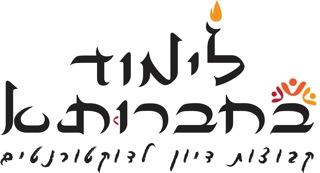המפגש עסק בהיסטוריולה (אגדה מאגית) על האם השכולה סממית. האגדה נמצאת בכמה קערות השבעה בארמית יהודית מבבל ובכמה קמעות מתכת בארמית יהודית מארץ ישראל, ויש לה מקבילות רבות בספרות נוצרית ומוסלמית בשפות רבות, וכן זיקה למסורות יהודיות מאוחרות יותר על השדה לילית. עיקרו של המפגש היה קריאה צמודה של קמיע ברונזה שרבקה אליצור–ליימן פרסמה, מתוך השוואה לגרסאות האחרות שפורסמו ולקמיע נוסף שהיא עמלה על פרסומו בימים אלה. במפגש דנו בהבדלי הנוסח והלשון שבין הגרסאות, ובמיוחד על בעיות שנוצרו בשעת המעבר של הטקסט מארמית ארץ ישראלית לארמית בבלית. בנוסף, נדונו גלגולי המסורת, במיקוד על שאלת דמותה של סממית – האם היא אישה מסכנה, שדה, או אישה מסכנה שהפכה לשדה?
משתתפים: איתי קגן, אלון ברנד, ירוסלב מודרון, מרדכי וינטרויב, חגי עמנואל, יונתן מי־טל, שלומי אפרתי, רבקה אליצור–ליימן.
This session was dedicated to the Historiola (magical story) of the bereaved mother Smamit. The tale appears in some Jewish Aramaic incantation from Mesopotamia and in few metal amulets written in Jewish Palestinian Aramaic, with many parallels in Christian and Muslim literature in many languages, as well as a connection to later Jewish traditions concerning the demoness Lilith. The larger part of the session consisted of a close reading of a bronze amulet that Rivka Elitzur-Leiman has published, accompanied by comparison with the other published versions of the text, as well as an unpublished one which she is currently working on. We discussed the textual and linguistic variants, especially the problems that have arisen in the text during its move from Palestinian to Babylonian Aramaic. Additionally, we discussed the evolution of the tradition and its motifs, with a focus on the protagonist/antagonist Smamit – was she an afflicted woman, a demoness, or an afflicted woman turned demoness?
Participants: Itai Kagan, Alon Brand, Jaroslav Mudron, Mordechai Vaintroub, Chagai Emanuel, Jonathan Mey-Tal, Shlomi Efrati, Rivka Elitzur-Leiman.


